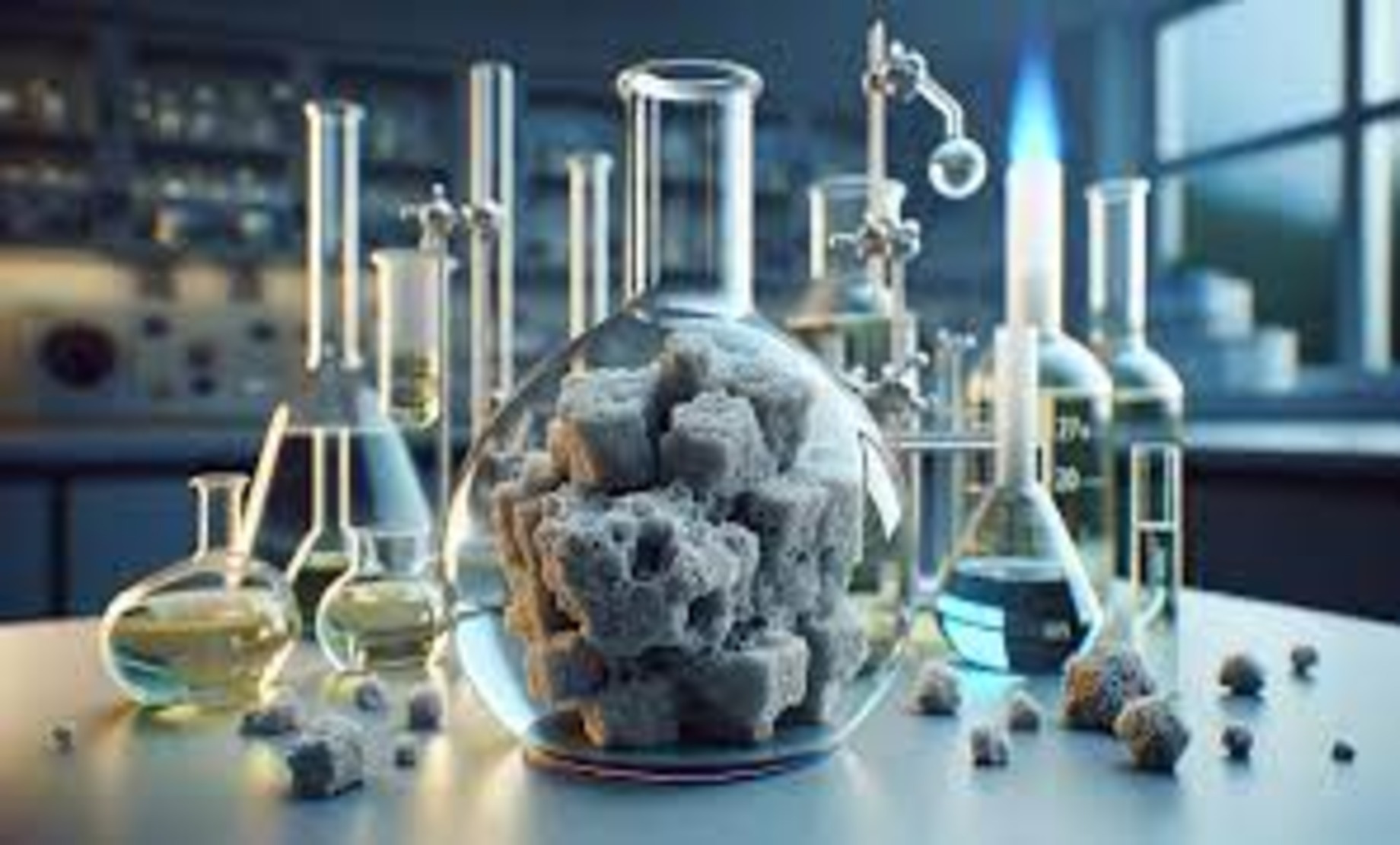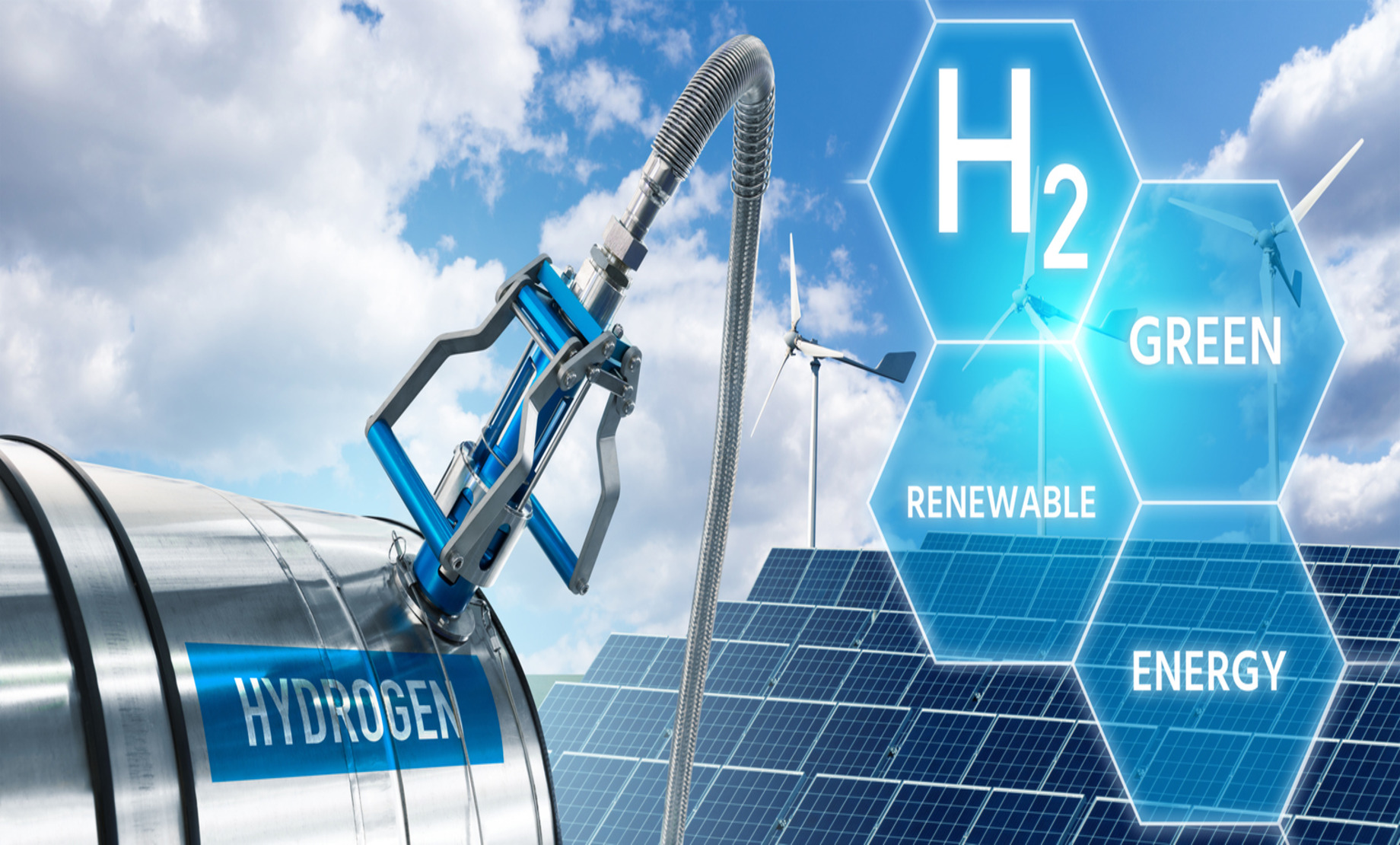Session 01: Catalysis
Catalysis is the process of accelerating chemical reactions using a substance called a catalyst that remains unchanged. It plays a crucial role in chemical manufacturing, energy production, and environmental protection by enhancing efficiency, reducing energy use, and minimizing waste. Catalysts are classified as homogeneous, heterogeneous, or biological. They are central to green chemistry, CO2 conversion, and clean energy technologies like hydrogen production and fuel cells. Recent advances in nanotechnology and AI driven design are transforming catalyst development, enabling more sustainable and selective processes. Catalysis remains essential for meeting global industrial and environmental challenges.
Session 02: Chemical Engineering
Chemical Engineering is a multidisciplinary field that applies principles of chemistry, physics, mathematics, and biology to design, optimize, and operate processes that convert raw materials into valuable products. From developing sustainable energy solutions and creating new materials to improving pharmaceutical manufacturing and environmental protection, chemical engineers play a vital role in solving global challenges. Their work spans industries including oil and gas, biotechnology, food, and consumer goods. With a focus on efficiency, safety, and sustainability, chemical engineering continues to drive innovation that impacts everyday life and supports the advancement of modern technology and industry.
Session 03: Green Chemistry
Green Chemistry is an innovative approach to chemical research and manufacturing that focuses on designing products and processes to minimize environmental impact and enhance sustainability. It emphasizes the use of safer chemicals, renewable resources, energy-efficient methods, and waste reduction. By applying the 12 principles of green chemistry, scientists aim to prevent pollution at the source rather than managing it after it's created. Green chemistry plays a crucial role in developing eco-friendly materials, cleaner production technologies, and sustainable alternatives in industries such as pharmaceuticals, agriculture, and energy—paving the way for a healthier planet and a greener future.
Session 04: Environmental Catalysis
Environmental Catalysis involves the use of catalysts to reduce environmental pollution and support sustainable chemical processes. It plays a critical role in controlling emissions, treating wastewater, and converting harmful pollutants into less toxic or reusable substances. Key applications include catalytic converters in vehicles, industrial flue gas treatment, and advanced oxidation processes for air and water purification. By enhancing reaction efficiency and selectivity, environmental catalysis helps minimize waste, lower energy consumption, and reduce greenhouse gas emissions. This field is essential for addressing global environmental challenges and advancing cleaner technologies in transportation, energy, and manufacturing sectors.
Session 05: Catalysis for Renewable Sources
Catalysis for Renewable Sources focuses on the development of catalytic processes that convert renewable feedstocks—such as biomass, CO2, and water—into sustainable fuels, chemicals, and materials. This field is key to reducing dependence on fossil fuels and advancing a circular economy. Catalysts enable efficient transformations in biofuel production, hydrogen generation, CO2 utilization, and green chemical synthesis. By improving reaction rates, selectivity, and energy efficiency, catalytic technologies help unlock the potential of renewable resources. Catalysis for renewables supports the global transition toward low-carbon energy systems and plays a vital role in achieving climate and sustainability goals.
Session 06: Catalysis in Medicine and Pharmaceuticals
Catalysis in Medicine and Pharmaceuticals plays a vital role in the development and production of drugs, enabling efficient, selective, and sustainable synthesis of complex molecules. Catalytic processes are used to create active pharmaceutical ingredients (APIs), improve reaction yields, and reduce by-products, making drug manufacturing cleaner and more cost-effective. Enzyme catalysis and metal-based catalysts are commonly employed to achieve precise transformations critical for drug efficacy and safety. This field also supports the discovery of new therapies by accelerating medicinal chemistry workflows. Overall, catalysis enhances innovation, sustainability, and accessibility in modern pharmaceutical and biomedical applications.
Session 07: Petrochemical Engineering
Petrochemical Engineering is a specialized branch of chemical engineering that focuses on the transformation of crude oil, natural gas, and other hydrocarbons into valuable petrochemical products such as plastics, fertilizers, solvents, and synthetic fibers. It involves complex processes like cracking, reforming, and polymerization to convert raw materials into essential industrial and consumer goods. Petrochemical engineers design, optimize, and manage large-scale processing plants, ensuring efficiency, safety, and environmental compliance. With growing demand for cleaner technologies, the field is increasingly integrating sustainable practices and innovations to reduce emissions, improve energy efficiency, and support the transition to a more sustainable petrochemical industry.
Session 08: Industrial Catalysis and Process Engineering
Industrial Catalysis and Process Engineering focuses on the design and optimization of catalytic processes for large-scale chemical manufacturing. It combines catalyst development with engineering principles to enhance reaction efficiency, selectivity, and sustainability in industries such as petrochemicals, pharmaceuticals, and energy. Industrial catalysis enables faster, cleaner, and more cost-effective production, while process engineering ensures safe, scalable, and energy-efficient operations. Together, they play a critical role in improving product yields, reducing waste, and lowering environmental impact. As industries move toward greener technologies, this field is central to advancing innovative solutions for sustainable and economically viable chemical production.
Session 09: Catalysis and Zeolites
Catalysis and Zeolites explores the use of zeolites—microporous, crystalline aluminosilicates—as highly effective catalysts in a variety of chemical processes. Due to their unique pore structures, high surface area, and strong acidity, zeolites are widely used in petroleum refining, petrochemical production, and environmental applications. They offer exceptional selectivity and stability, enabling efficient conversion of hydrocarbons, removal of pollutants, and synthesis of fine chemicals. Research in this field focuses on designing novel zeolite frameworks and modifying their properties to enhance catalytic performance. Zeolites play a vital role in advancing sustainable, high-performance catalytic systems for industrial and environmental technologies.
Session 10: Synthetic Chemistry Techniques
Synthetic Chemistry Techniques involve the strategic design and execution of chemical reactions to create complex molecules from simpler ones. These techniques are fundamental in producing pharmaceuticals, agrochemicals, materials, and fine chemicals. Key methods include organic synthesis, cross-coupling reactions, stereoselective synthesis, and catalysis, often using modern tools like microwave-assisted synthesis or flow chemistry for enhanced efficiency. Advances in synthetic techniques enable greater control over molecular structure, reactivity, and yield, while also promoting greener and more sustainable practices. Synthetic chemistry is essential for innovation across science and industry, driving the discovery and production of new compounds with valuable properties and applications.
Session 11: Heterogeneous Catalysis
Heterogeneous Catalysis is a catalytic process in which the catalyst exists in a different phase—typically solid—than the reactants, which are usually gases or liquids. It plays a crucial role in industrial chemistry, enabling large-scale production of fuels, chemicals, and materials. Common applications include catalytic converters, ammonia synthesis, and petroleum refining. Advantages of heterogeneous catalysis include easy separation of catalysts, reusability, and suitability for continuous processes. Research focuses on improving catalyst surface properties, stability, and selectivity to enhance efficiency and reduce environmental impact. Heterogeneous catalysis is essential for sustainable chemical manufacturing and environmental protection across various sectors.
Session 12: Hybrid Catalysts
Hybrid Catalysts combine the advantages of different catalytic systems—such as homogeneous, heterogeneous, enzymatic, or photocatalytic components—into a single, integrated structure to enhance performance, selectivity, and functionality. These catalysts are designed to address limitations of traditional systems by merging the flexibility of molecular catalysts with the robustness of solid supports. Hybrid catalysts are widely explored for applications in green chemistry, energy conversion, fine chemical synthesis, and environmental remediation. They offer tunable properties, improved recyclability, and multi-functionality, enabling more efficient and sustainable chemical transformations. Ongoing research aims to develop innovative hybrid materials that support complex, multi-step catalytic processes in a single system.
Session 13: Catalysis for Energy
Catalysis for Energy focuses on the development of catalytic processes that enable sustainable energy production, storage, and conversion. Catalysts play a pivotal role in renewable energy technologies, such as hydrogen production through water splitting, biofuel synthesis, and CO2 reduction. They also enhance energy efficiency in processes like fuel cells and batteries. By improving reaction rates, selectivity, and energy efficiency, catalytic systems help reduce the environmental footprint of energy production. Research in this field aims to develop novel catalysts that support cleaner, more cost-effective energy solutions, contributing to the global transition toward renewable and low-carbon energy systems.
Session 14: Material Sciences
Material Sciences is an interdisciplinary field that explores the properties, performance, and applications of materials in various industries. It combines principles from physics, chemistry, and engineering to understand the structure-property relationships of metals, polymers, ceramics, and composites. Material scientists focus on developing new materials with enhanced properties, such as strength, conductivity, and sustainability, to meet the demands of advanced technologies. This field plays a crucial role in innovations in electronics, aerospace, renewable energy, and healthcare, driving progress in areas like nanomaterials, biomaterials, and smart materials for a wide range of industrial and consumer applications.
Session 15: Surface Chemistry
Surface Chemistry focuses on the study of chemical reactions and interactions occurring at the interface between different phases, typically solid-liquid, solid-gas, or liquid-gas. It plays a key role in processes such as catalysis, adsorption, corrosion, and surface coatings. Surface chemistry is crucial in fields like material science, environmental engineering, and nanotechnology, where the properties of surfaces significantly impact functionality. Researchers explore how surface structure, energy, and composition influence reactivity and behavior, enabling the development of advanced materials, sensors, and more efficient catalytic systems. This field is fundamental to enhancing industrial processes and environmental sustainability.
Session 16: Fluid Mechanics
Fluid Mechanics is the study of the behavior of fluids (liquids and gases) in motion and at rest. It combines principles of physics and engineering to analyze forces, flow patterns, and energy distribution in fluid systems. Fluid mechanics is essential for understanding and optimizing a wide range of applications, including fluid transport in pipelines, aerodynamics in vehicles, hydraulic systems, and natural phenomena like weather patterns and ocean currents. It plays a crucial role in industries such as energy, manufacturing, and environmental engineering, helping to design efficient systems, control fluid flow, and improve processes in both industrial and natural environments.
Session 17: Catalysis in Oil and Gas
Catalysis in Oil and Gas plays a critical role in refining and petrochemical processes, enhancing the efficiency and selectivity of chemical reactions involved in converting raw oil and gas into valuable products. Catalysts are used in processes such as catalytic cracking, hydrocracking, and desulfurization to produce fuels like gasoline, diesel, and jet fuel, as well as chemicals and polymers. They help improve energy efficiency, reduce waste, and minimize environmental impact. Advanced catalytic technologies also enable cleaner and more sustainable production methods, supporting the oil and gas industry’s efforts to meet global energy demands while addressing environmental concerns and regulatory standards.
Session 18: Electrocatalysis
Electrocatalysis is the study and application of catalysts to enhance electrochemical reactions, such as those involved in energy conversion and storage. Electrocatalysts play a crucial role in processes like fuel cells, water splitting, and CO2 reduction, where they facilitate efficient electron transfer and improve reaction rates. They are key to developing sustainable energy solutions, enabling the production of hydrogen from water, converting renewable electricity into chemical energy, and reducing greenhouse gas emissions. Research in electrocatalysis focuses on designing efficient, durable, and cost-effective catalysts to advance clean energy technologies and contribute to the global transition to a low-carbon economy.
Session 19: Quantum Chemistry
Quantum Chemistry is a branch of chemistry that applies quantum mechanics to understand and predict the behavior of atoms and molecules. It focuses on the interactions, electronic structures, and properties of matter at the atomic and molecular level. By solving complex mathematical equations, quantum chemistry provides insights into chemical bonding, reaction mechanisms, and molecular dynamics. This field is fundamental for designing new materials, drugs, and catalysts, as well as for improving industrial processes. Quantum chemistry combines computational methods and theoretical models to simulate and analyze chemical systems, playing a pivotal role in modern chemistry and materials science.
Session 20: Organometallics, Organocatalysis and Bioinorganic Chemistry
Organometallics, Organocatalysis, and Bioinorganic Chemistry are interconnected fields that explore the roles of metals and metal-containing compounds in chemical processes. Organometallics focuses on compounds containing metal-carbon bonds, essential in catalysis and material science. Organocatalysis uses small organic molecules as catalysts in chemical reactions, offering a greener alternative to traditional metal-based catalysts. Bioinorganic Chemistry investigates the role of metal ions in biological systems, such as enzymes and metalloenzymes, which are crucial for processes like respiration and DNA replication. Together, these disciplines drive innovations in sustainable catalysis, drug development, and understanding biological functions at the molecular level.
Session 21: Nanochemistry
Nanochemistry is the study of chemical reactions and processes at the nanometer scale, typically involving materials with structures ranging from 1 to 100 nanometers. It explores how properties like reactivity, conductivity, and strength change at the nanoscale, enabling the design of novel materials with unique characteristics. Nanochemistry is fundamental in the development of nanomaterials, such as nanoparticles, nanocomposites, and nanostructured catalysts, which have applications in electronics, medicine, energy storage, and environmental remediation. By manipulating matter at the atomic and molecular level, nanochemistry drives innovations in technology, offering new possibilities for advanced materials and efficient processes in various industries.
Session 22: Nuclear Chemistry/Radiochemistry
Nuclear Chemistry or Radiochemistry focuses on the study of radioactive elements and their chemical behavior. It involves the understanding of nuclear reactions, radioactive decay, and the use of radioactive isotopes in various applications, including medical imaging, cancer treatment, and energy production. Radiochemistry plays a crucial role in nuclear energy, environmental monitoring, and the development of radiopharmaceuticals. Researchers in this field study the interactions of radiation with matter, as well as the safe handling and disposal of radioactive materials. Nuclear chemistry is essential for advancing clean energy technologies and for the medical and industrial applications of nuclear science.









